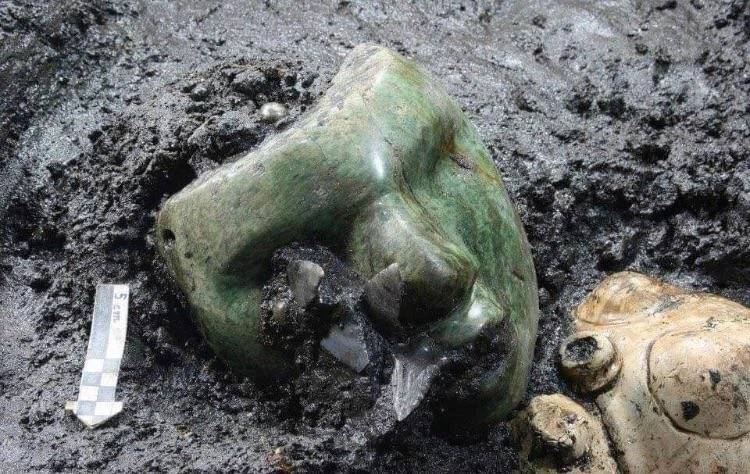A 2,000-year-old green serpentine stone mask was found at the base of the Pyramid of the Sun in Teotihuacan, Mexico.
It's believed that these offerings were left as part of a ritual to inaugurate the construction of the pyramid, hence its location at the lower level. The mask itself is extremely lifelike, which gave rise to the theory that it's a portrait. This would be incredible, as archaeologists have little information about the people who constructed Teotihuacan. There are also conflicting theories about the exact use of the pyramid. Even the name isn't original.
In the 17th century, a metal mask was employed to restrain individuals deemed insane. I recently delved into the history of mental illnesses and came across the Rosenhan experiment. In this study, David Rosenhan, a Stanford professor and psychologist, and his colleagues feigned hallucinations to gain admission to psychiatric hospitals. Despite later acting normal and claiming to be fine, the hospitals refused to release them, diagnosing all but one with schizophrenia. They were only released under the condition of taking antipsychotic drugs.
Rosenhan himself described his experience in the hospital, saying, "I told friends, I told my family: 'I can get out when I can get out. That's all. I'll be there for a couple of days and I'll get out.' Nobody knew I'd be there for two months. The only way out was to point out that they're (the psychiatrists) correct. They had said I was insane, 'I am insane, but I am getting better.' That was an affirmation of their view of me."
The story continued with the hospital challenging Rosenhan to send more pseudopatients. Despite the hospital's confidence in spotting fakes, out of 193 patients sent by Rosenhan, they identified 41 as pseudopatients. However, Rosenhan had not sent any pseudopatients.
Rosenhan published his study in 1973 under the title "On Being Sane in Insane Places." His conclusion criticized psychiatrists for their lack of understanding and called for a shift toward focusing on specific behaviors rather than relying on psychiatric labels, all while condemning the dehumanizing conditions in psychiatric hospitals.


